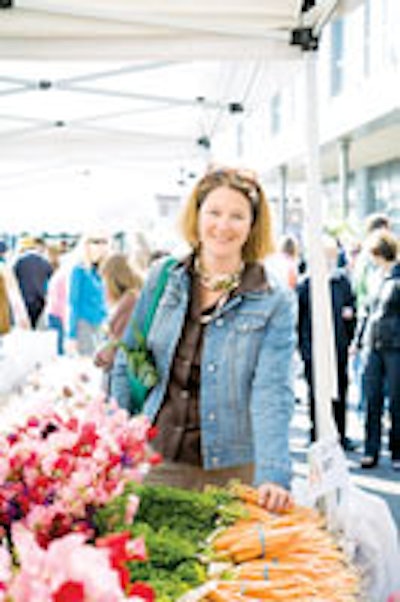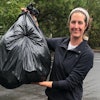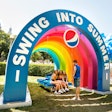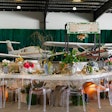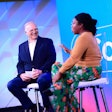This is the second of four profiles of planners who are committed to eco-friendly events.
Julie Lindsey, director of corporate events at the Gap, started looking for ways to green her meetings and events after realizing it was a topic often discussed but rarely tackled. “I participate in a benchmark group of corporate planners,” she says. “We had identified green meetings as a hot topic and no one had a program around it, so I started pulling articles from every magazine and put them into a binder to show people in our company how we can make events greener.”
Getting fellow planners and even higher-ups at the clothing giant on board wasn’t difficult—but vendors have been another story. “Sometimes we have to push harder because hotels aren’t into it,” Lindsey says. Boutique properties, with their smaller vendor networks and ability to be more flexible in their sourcing, tend to be more receptive than some of the bigger players. “We have to ask them for clearly marked recycling containers, for glasses instead of disposable cups, and for nontoxic housecleaning materials,” she says.
Creating green menus has required Lindsey to bone up on her food expertise. “You have to develop a knowledge of what’s seasonal in different areas,” she says. “I was in Dallas in January, and they said they were going to put asparagus on the menu.” Realizing this meant that the ingredient would have to be shipped in from Central or South America, Lindsey asked the venue to substitute local root vegetables instead. Whenever seafood’s on a menu, Lindsey checks it against the Monterey Bay Aquarium’s Seafood Watch Program to see if it is sustainably produced.
Leftover food is picked up and distributed to local needy people by Special E, a nationwide food-rescue service. For events that take place at Gap’s headquarters in San Francisco, Lindsey’s been working with the company’s in-house caterer to come up with menus that use local and organic ingredients.
Paper use is another area where Lindsey and her team are cutting back, by using an online registration service and slashing paper mailings. “We used to send letters, hotel brochures, printouts about the conference—now we email links to the hotel and online conference information.” When hard copies are necessary, the company uses 100 percent postconsumer recycled paper printed with soy ink.
Even giveaways are getting a second look. She pushes her staff to consider how a potential gift is made. “We just did an event where we gave a notepad and a pen that were both made of recycled materials,” Lindsey says.
Challenging vendors to come up with green options has other rewards: Lindsey says their response shows how flexible they are likely to be on other issues, too.
